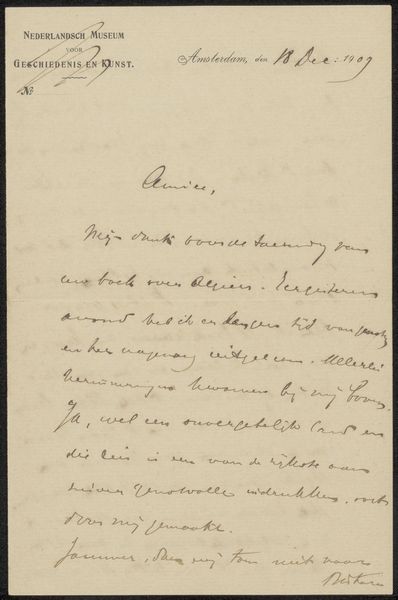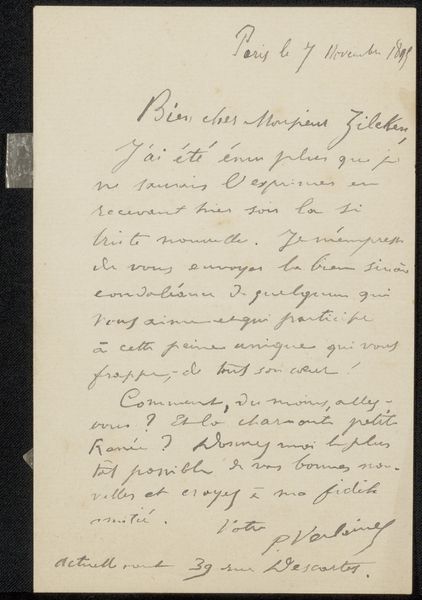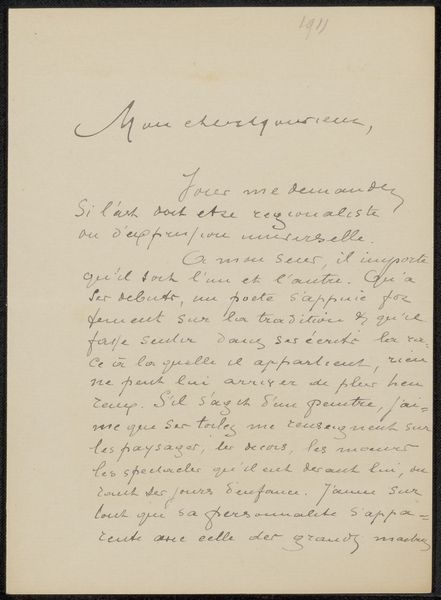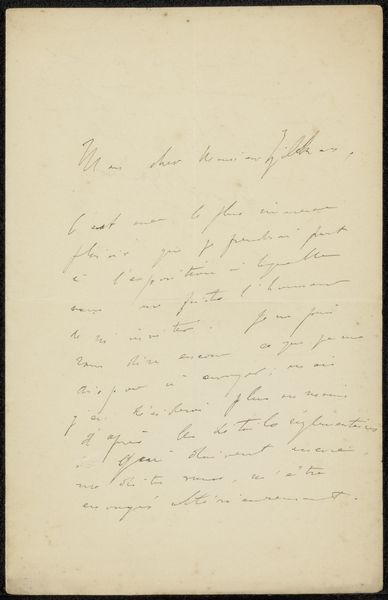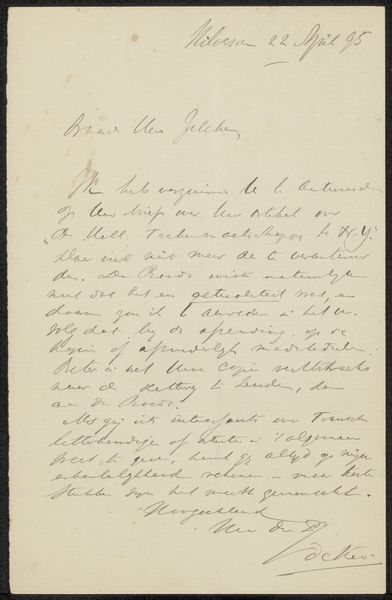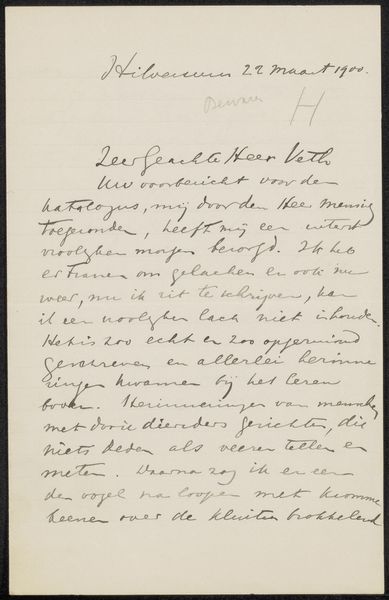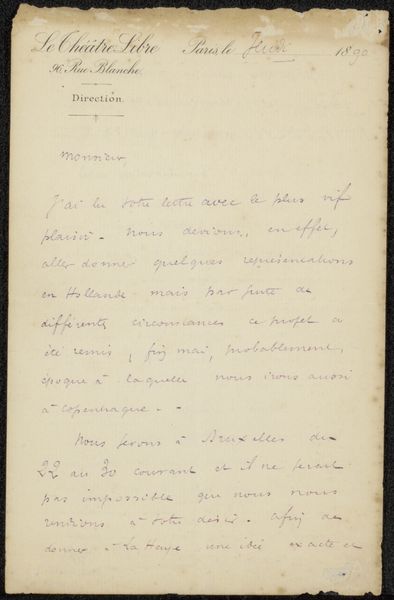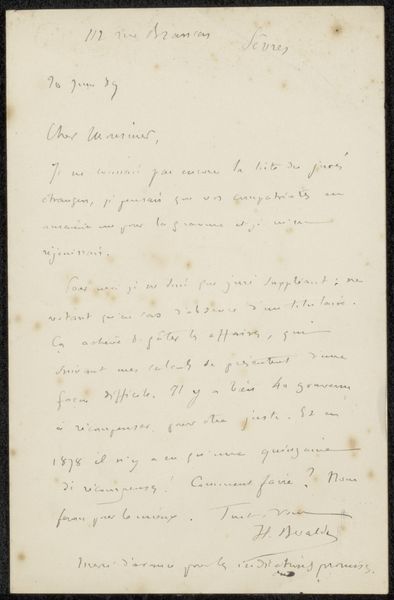
paper, ink, pen
#
portrait
#
ink paper printed
#
paper
#
personal sketchbook
#
ink
#
sketchbook drawing
#
pen
#
calligraphy
Copyright: Rijks Museum: Open Domain
Curator: Here we have a letter entitled “Brief aan Philip Zilcken,” possibly dating from between 1904 and 1925, penned by Fréderic Mistral using ink on paper. Editor: There’s a real intimacy to it, isn't there? It feels so personal and immediate, like peering directly into a private moment captured in elegant script. Curator: Indeed. The paper itself, and the particular ink used, speaks volumes about material constraints of the time. We are seeing the physical traces of intellectual labour. The calligraphy itself functions almost as a textile. It demonstrates skill while at the same time serves as a carrier of correspondence, something for everyday use. Editor: It is intriguing to consider Zilcken as the intended audience. Understanding his relationship to Mistral perhaps unveils additional context. Was he a patron, a colleague, a friend? I can read snippets of French discussing dinner plans and a sanatorium, implying themes of leisure and health, but also social power and access. Curator: Exactly. Consider how writing materials were a marker of class and education. Mistral, who won the Nobel Prize in Literature, carefully chooses to correspond this way to express social ties with fellow intellectuals. The labour to produce something legible and aesthetic further displays esteem and regard. Editor: Yes, a letter becomes not merely communication but a social performance. And there is something implicitly revolutionary about the preservation of the every day alongside more consciously crafted artistic pieces. Curator: In examining its materiality alongside social usage, the meaning of the work is enhanced. It brings up further investigation and questions to contemplate. Editor: This has shifted my perception of the piece quite significantly. Instead of seeing only a mundane personal letter, I see how documents such as these create ripples through a larger societal history, raising so many interesting intersectional topics to explore.
Comments
No comments
Be the first to comment and join the conversation on the ultimate creative platform.
